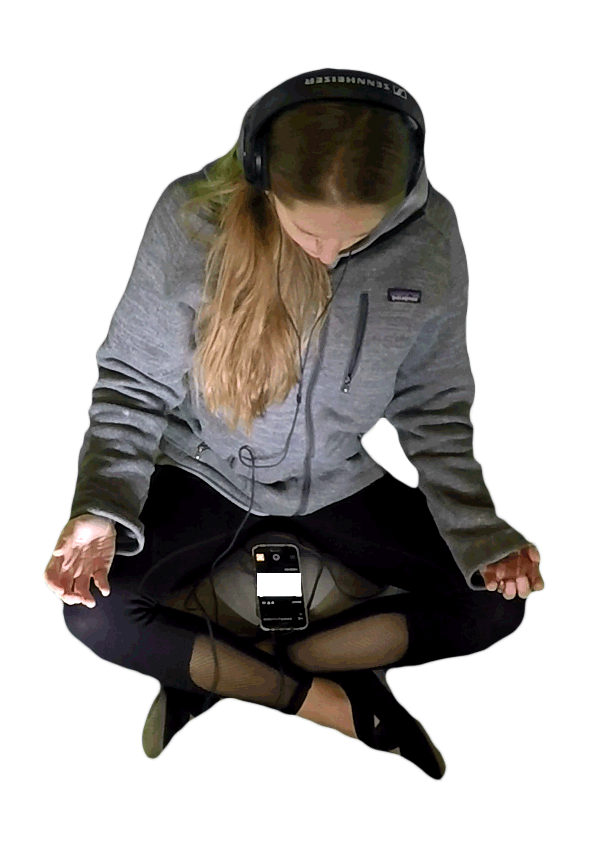Gretchen Andrew (b California. 1988) started painting in San Francisco after becoming convinced that the internet can teach you anything. Her practice incorporates traditional oil painting as well as other genres that respond to an investigation that revolves around the processes of knowing and of becoming. She has completed projects or exhibitions with The New York Metropolitan Museum of Art, The V&A Museum, The British Film Institute, The Lumen Prize for Digital Art, The British Arts Council, and The White Building. She trains in London with the artist Billy Childish. During her residency at Arebyte Gallery (winter 2016) in London she investigated the validity of the claim that you can learn everything on the internet. The gifs result from this branch of her reseach and investigation, shifting the performative body of the artist into the liminal space of liquid dimension. In this interview she talks about her professional path, from working at Silicon Valley to being an artist, she discusses about general issues related to post-digital, post-internet, and she unveil her thinking behind the works produced for the project (and exhibition) HOW TO HOW TO HOW TO at Arebyte as a conclusion of her first phase of the residency.
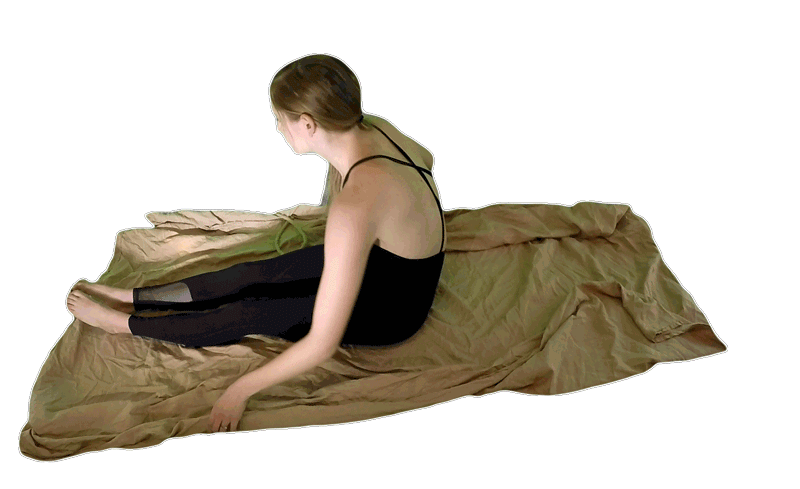
Can you start by talking about your experience at Silicon Valley?
I got this very cool degree at Boston College, Information Systems. We’d joke that it was majoring in The Internet, but it’s purpose was to teach how technology could be used to create and maintain competitive advantage. The classes had titled like “New Media Industries” “ECommerce and “Social media for Management.” At BC I learned how technology can be used to create something or someone irreplaceable and how to use technology to disrupt and disintermediate. Ideas that govern how I conduct myself as an artist.
After my first year I interviewed for a summer job at Intuit (Mint.com, quickbooks, turbotax). At my interview the manager handed me a list of programing and scripting languages and asked, “Do you know these?” I answered that was familiar with some but could learn the rest. Really I had only passing familiarity with a couple. The three weeks before the job started I used the internet to teach myself the basics of javascript, xml markup, php and python. The summer was a success and I was able to work parttime during the school year and fulltime each summer.
After I graduated got hired by Google to work in “People Technology,” specifically an arm of Human Resources that built and managed internal software, software built by google that only google used.
I had this terrible manager that made me feel like I was inside a Dilbert cartoon, not exactly how Google is advertise. But I was green and couldn’t escape the feeling that it wasn’t due to my shortcomings. At this time I began considering what else I could do if this dream job wasn’t for me. You don’t leave Google to work at Amazon and believe things would get better.
If I went back now I’d be able to more maturely handle the opposition encountered there, but at the time I already knew I wanted a life’s work not a “work life balance.”. As a result I took everything very personally. I didn’t know that I wanted to be an artist but I believed that being an artist would hold my energy in a way that a desk job couldn’t. I also considered learning the banjo.
In this way, HOW TO HOW TO HOW TO predates my painting practice as one of its basic questions, can you learn how to be something online, was established before I decided that that thing I was going to be was a painter.
Another important experience in silicon valley was its utopian energy, an active belief that technology is and was going to continue to make everything infinitely better. There’s a pretension and underbelly to this energy but it made me feeling like I could learn to do, and therefore become, anything. As actively my painting practice continues to pressure this assumption, I also wanted to question it. HOW TO HOW TO HOW TO does this by abstracting this assumption into other arenas.
Were you already acquainted with the existence of artistic experimentations on the internet, known as internet art, net.art, etc.?
When I was thirteen my dad introduced me to Flash which required that I learn a now mostly useless language called actionscript. I was experimenting with webbased animations, photoshop painting, and the markup languages. As a result, I created content that I now think of as Net Art. But at the time I wasn’t thinking about creating art, I was just exploring identity and creating visual worlds. It was my way of growing up online.
Later I became more aware of Net Art through articles like Man and Machine. To me it seemed that a lot of Net Art lacked sincerity. It was very close to pranks. This work is interesting but it isn’t for me to make. The art that I love stays so far from irony. I can remember being afraid that contemporary art was a joke I didn’t get, a joke on the outsider. I think people still have this fear and it keeps the art world insular. It’s damaging to everyone.
Valuing sincerity manifests in HOW TO HOW TO HOW TO, specifically when I select which YouTube videos to learn from. I decided to only select from How To videos that appeared to be making goodfaith efforts to teach something, even if the advice was as off the wall as drinking cough syrup to conceive a boy or sticking your hand in a bag of ice to prepare for giving birth.
In looking for sincerely in the medium I’ve discovered some things that really disturbed me, such videos that claim to provide exercises that will improve your vagain shape. I guess I am happier that these videos exist. It’s dark but also liberating. It’s a reminder that the internet works on the supply and demand side simultaneously. Sometimes people produce content that no one watches and sometimes people use Google Search Tools to see what content people are searching for and produce content accordingly. Either way the results are honest to our needs, desires and anxieties.
There are many parody videos for “How to be sexy” but the sincere ones have more views. The parodies contain cultural comment but also make you feel stupid for asking. I’m fond of Internet Bravery that comes from people making awkward and vulnerable content, content that might also expose how insecure and vain we are. I think the net is ready, like the rest of the art world, for more sincerity and I believe vulnerability is a path there.
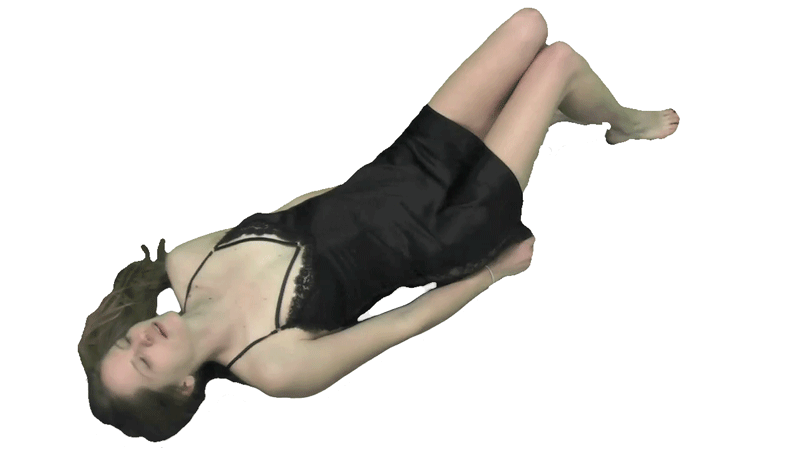
Your research and practice brings together traditional painting with cutting edge technologies. Can you talk about your background, about your encounter with painting and art throughout the internet?
I began my quest to become an artist by searching “How To…” on YouTube. How to stretch a canvas, paint clouds, draw hands etc. I also learned from MoMA and Stanford Online, taking a free class on practice based research from the latter.
Initially my digital practice sprung from a desire to creatively digitize my paintings, to have their life in the digital realm of equal importance and meaning as their the physical. To do this I’ve used wearable cameras and virtual reality, taking responsibility of the way my work becomes public. I think of my videos and virtual reality experience as artworks in themselves, not just pointers to something physical.
HOW TO HOW TO HOW TO is the first time my digital work is separate from my painting practice. They share a similar ethos but don’t interact with each other.
You have already started your residency at Arebyte. What are your expectations in relation to your research and what has already changed until now?
I worked with the director at the Arebyte residency to structure it in a way that would allow for distinct phases. The first phase took place during February and involved the creation of 90 .gif animations, each looping a distinct action learned from watching “How To” videos on YouTube. For example, you see me applying sunscreen for “how to age slowly.”
While there were some themes to this phase the time was intentionally unfocused. I wanted to create a lot of content through which I could nail down a process and experiment with different modes of display. It also allowed me to discover which themes had the most life in them. Some of the ideas that felt conceptually strong didn’t have an equal visual impact.
The next phase will last until November, when I’ll conclude with an exhibition. Right now I am processing what I’ve learned and selecting where I will dive deeper. I’m currently working on a composite .gif made of “how to get perfect feet, toes, legs, abs, skin, teeth etc.”
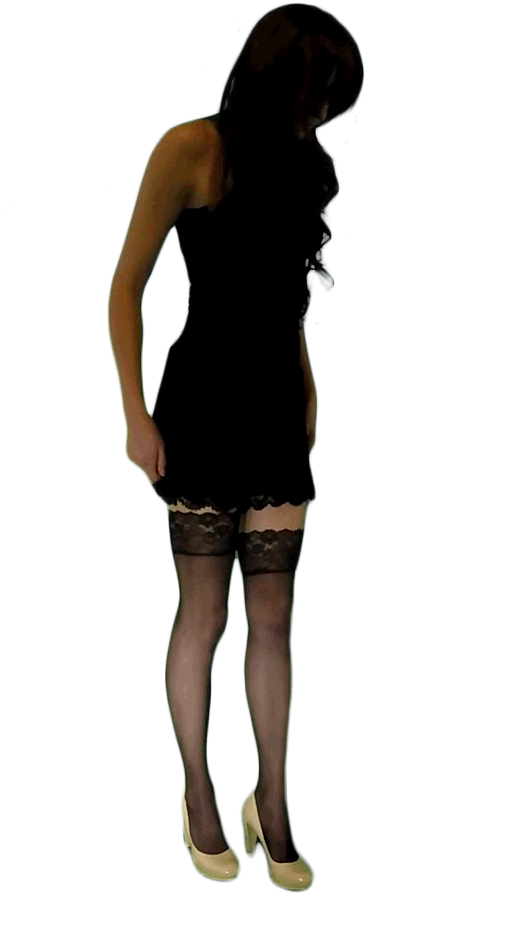
Can you talk more about the project you are developing at Arebyte?
HOW TO HOW TO HOW TO investigates what you can and cannot learn, and by way of learning and become, through time + persistence + YouTube “How to” searches including: how to die, how to speak Japanese, how to be sexy, how to do a split, and how to be religious.
The result is both performative and visual, embodied and object based, digital and physical. The .gif with its repetitive loop is used as the primary medium to suggest and question the notion of “practice makes perfect.”
The gif versions of myself endlessly attempt to do splits, walk in high heels, and prepare a body for burial even when the artist’s physical body is distracted or exhausted. My gif selves exist in a world where time, energy, and motivation appear to be only limitations to success.
Can you learn everything on the internet? HOW TO HOW TO investigates the validity and shortcomings of such a claim. What else have the Internet and technology promised? What limits us? Undertones of genetic, social, family, and class privilege exist in the notions of success and failure.
At this point, my most developed them is life cycle where 20 .gif animations run in a loop moving from how to convince, prepare for labor, give birth through grow up, be mature, age gracefully, to die, preparing a body for burial, and rebirth.
You also painted a work by digital artist Petra Cortright. Can you talk more about this Project?
Undigitizing (painting in oils) Petra’s work was a way for me to suggest a nuanced relationship between digital and physical things. I’ve encountered a very narrow view of digital art that I wanted to challenge. Specifically, I wanted to question the notion that digital things that have physical counterparts are dependant on each other for meaning. We tend to treat digital photos of paintings as languagelike pointers to physical things instead of things in themselves. Images aren’t like words, referencing unembodied meaning. They are capable of provoking primary experience that is different from the experience of the physical thing because of, among other reasons, the mediating aesthetics of the device.
I also wanted to make a bold assertion about the canon of digital art. I frequently make version paintings after established masters. By doing the same thing with Petra’s landscapes I suggest that Net Art /digital art has an established history we can borrow and steal from.
I’m doing this in HOW TO HOW TO HOW TO by naming myself “next top animated gif model,” a reference to Olia Lialina 2005 Animated Gif Model.
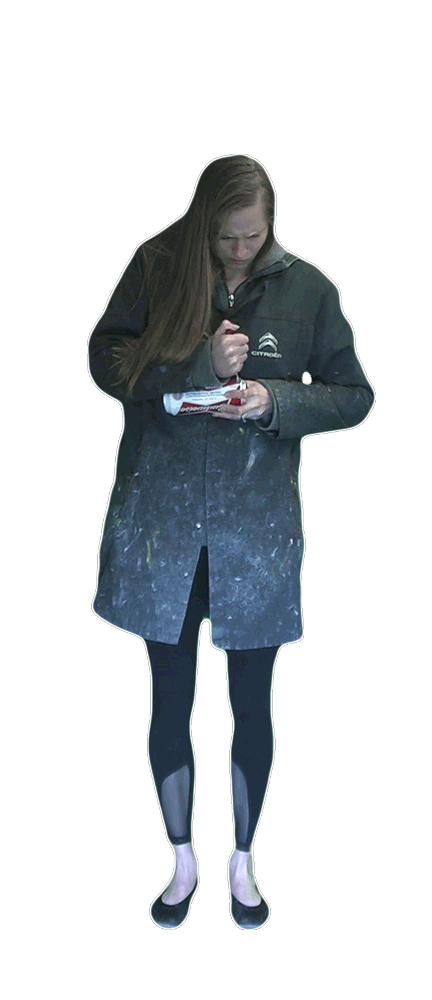
Do you consider the digital as material? What are its potentials and its restrictions?
The digital is material in that is is made of physical things. There are lots of artists working to make the physical of the web more apparent server farms, fiber optic cables etc. The digital is also material in that it is important, essential.
I’ve argued that digitization is an artistic process, the responsibility of the painter today just as much as determining how their work will be hung in a traditional gallery.
One of it’s greatest complexities of the digital is the way the digital is always mediated by the device aesthetics, this can be a limitation if it isn’t fully considered by the artist.
Relevant to this question is the idea of Digital Monism, the metaphysical postulate that our human world is inseparably digital and nondigital, online and offline or, in obsolete terms, virtual and real. As the boxes we use fall apart, both in art and life, I think it’s important to assert an unqualified definition of real.
In 1996 American curator Steve Dietz founded the new media art program of the Walker Art Center in 1996, analysing networks and computation with a focus on the process rather than on objects. A recent trend in philosophy, called Object Oriented Ontology, shifts the object at the center of being. What is your position in this regard? (you can also view this interview by Valentina Gioia Levy to Czech curator Václav Janoščík on the occasion of his exhibition Return of the Object + The Disorder of Things at Galleria Galerie | Kvalitář in Prague: https://www.arshake.com/en/postinternetintervistaavaclavjanoscik/ )
There are two prevailing types of programming languages: object oriented programming (OOP) and procedural programming. The difference lies in giving precedence to the object in OOP, or the action in procedural. For example, an objectoriented program would first define the data that is to be manipulated, objects such as a carrot, and then define the actions that can be performed on that carrot: eaten, cooked, peeled etc. In procedural programming the action of peeling is defined first and then the need for a carrot is addressed. Both the objects and the actions end up being written into the code. It is a question of order, and that order inevitably impacts the structure of the resulting program. Looking at it this way, my understanding of objects isn’t dependant on material.
Objectoriented ontology addresses the same question, do we start first with the object or with the actions? Objectoriented ontology is similar to OOP, it is premacy of stuff over actions, with art objects such as paintings providing more meaning than their process of creation. This is synonymous with my experience of creating. As Walead Beshty said, “It all begins with basic materials: cellulose, lipids, proteins, plastics…” There are objects. The artist then defines what can possibly be done.
HOW TO HOW TO HOW came to be in a OOP or OOO way, I looked around at the objects available to me (YouTube, my body, green screens) and created the project. But within HOW TO HOW TO HOW TO there is a procedural or non OOO approach. Instead of looking at my body and considering what actions it could accomplish, I looked at actions and attempted to inflict them on my body. It begins with the idea of “how to skateboard” and then the object of my legs and a skateboard are dealt with. It begins with the action of splits and then my body is called for to accomplish the action. Had I begun with my legs the action “splits” would not have computed. In this way HOW TO HOW TO HOW TO investigates nonOOO approaches. Some things thought possible may occur in the way. Time may also be horribly wasted.
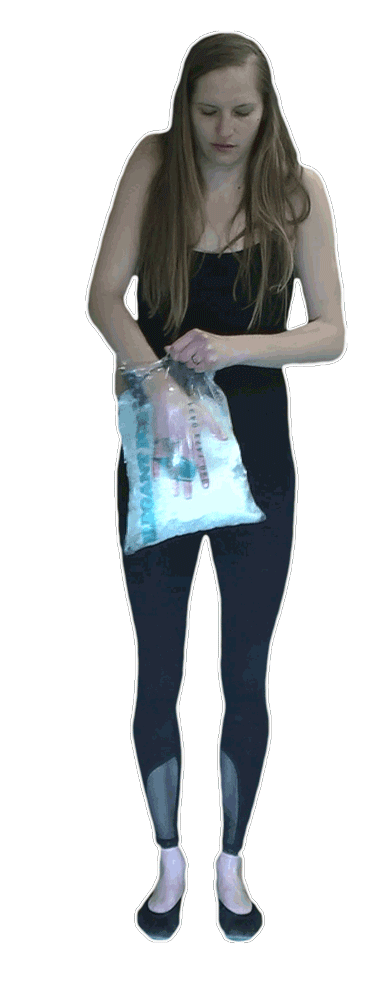
How would you define, in relation to your practice as well as to your life experience, postinternet (assuming that is legitimate to use this term referring to a moment in time when we live inside the internet)?
Post Internet Art that uses the internet but isn’t about the internet. Internet as a tool not a subject. From Barnett Newman I learned the difference between subjects and objects, that a painting may have an apple in it but isn’t necessary about applies. An abstract painting may not have identifiable objects in it but that doesn’t mean it is without subject. Postinternet’s relationship to technology is similar. The net and it’s tools may appear as objects or mediums but not as subjects. I deploy the .gif as a medium for it’s inherent formal qualities, not to make work about .gif animations.
Until you asked I hadn’t considered it as a term to apply to my life but it really eloquently describes my shift from working on internal technology at a technology company making technology products to the outside where I consider the stuff coming out as tools. Moving from San Francisco to London feels PostInternet.
images (cover 1) Gretchen Andrew, «How to Prepare Body for Burial at Home», part of the series realized for the project HOW TO HOW TO HOW TO at Arebyte Gallery, London, 2016 (2) Gretchen Andrew, «How to Forget»,part of the series realized for the project HOW TO HOW TO HOW TO at Arebyte Gallery, London, 2016 (3) Gretchen Andrew, «How to fake an Orgasm», part of the series realized for the project HOW TO HOW TO HOW TO at Arebyte Gallery, London, 2016 (4) Gretchen Andrew, «HOW TO BE Sexy», part of the series realized for the project HOW TO HOW TO HOW TO at Arebyte Gallery, London, 2016 (5) Gretchen Andrew, «How to get drunk»,part of the series realized for the project HOW TO HOW TO HOW TO at Arebyte Gallery, London, 2016 (6) Gretchen Andrew, «How to Prepare for Birth», part of the series realized for the project HOW TO HOW TO HOW TO at Arebyte Gallery, London, 2016






























